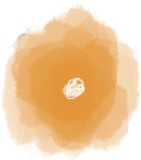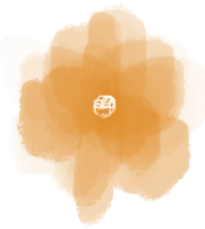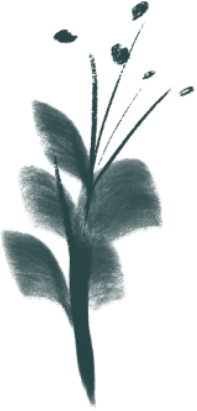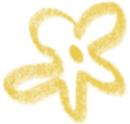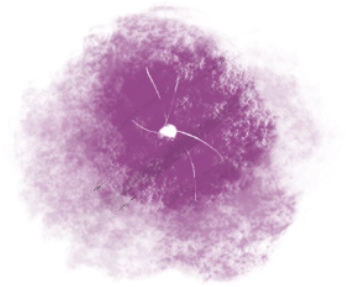Connections Lab: Final Project
Key Concept(s) and/or Intention(s) Driving the Project:
I continued my concept from Project #2 of composing shapes in a limited palette exercise, but this time, I actually made the “shapes” into flowers and pushed harder on the “arranging a bouquet” concept, rather than an abstract composition.
My intent was multi-layered; not only do I like the physical act of arranging flowers and writing notes as gifts, I also think limited palette exercises are very useful in art, since it requires you to work within constraints. I was hoping people would really push the boundaries of what a “flower arrangement” looked like, rather than submitting a lot of V-shaped bouquets.
I also really disliked a lot of e-cards that I signed throughout Covid lockdown, when people’s lives were changing and people were sending condolences/congratulations virtually. Even if you could write a note and change the typeface, I felt that something very simple to do, but still required some kind of action like a flower arrangement, would feel a little nicer to get than a card.
Production Decisions (i.e. technical, design, creative, etc.):
I decided to flip from a white on black color scheme to a black on white, to make it feel more like a “blank canvas'“ and I also used a more “handwritten” typeface to match the hand drawn flower assets. I went for a more hand drawn feel to release from the pressure of creation. I wanted things to feel really light and imperfect, because ideally, you would want to come back again and again and just try new things in a really lightweight way. I also wanted the assets to feel a little “borderless.”
In watching people work with the squares and circles in the last iteration, I noticed the first tendency was to line things up or to look for some kind of “order,” as though it was a puzzle to solve. I wanted this experience to feel a bit like walking into a field of wildflowers and just picking some: no matter what you choose or how many, you will end up with a kind of wild and beautiful bouquet. I did consider having the assets randomly appear on the canvas like a wildflower field, but I thought it would get messy to have the user do an arrangement elsewhere on the canvas or in a separate section. The more straightforward the interaction the better.
I also wanted the copy to be very simple, very few instructions, not much to follow or go on. I wanted it to be almost instinctual. I just wanted to see what would happen and what people would begin to do or gravitate towards. I also had a lot of the flower parts be transparent to allow for layering, but purposely made the interactions very limited. I didn’t want rotation, sizing, color choice, etc. I wanted to see what people would do in a small box to make something beautiful.
Describe Collaboration (i.e. distribution/sharing of work and responsibilities):
I worked really closely with Brian Ho on this project. We had a standing meeting on Tuesdays for a combination of pair programming, going over old assignments or questions/clarifications I had/needed, and to go over smaller homework assignments Brian gave for practicing things I hadn’t memorized yet or had some confusion about. These smaller assignments were immensely helpful since it was a small piece of code to break down, versus a large project I was trying to hack together.
I also had the advantage of having Project #2 be a pair project, so a lot of the set up for the Final was already done by myself and Jaye.
Major Challenges and Solutions:
A major challenge was actually prioritizing what to tackle. I had (and still have) a long list of “quality of life” edits I would have loved to make, but looking at how much time I had, what the assignment was, and what I needed to accomplish to get a point across was a great learning experience. Being able to “budget” my effort and spend time on things that would add a lot of value was helpful. I ended up not having too many big challenges for this effort because I think it was a good combination of being really well planned out, having a prototype done very early, and being flexible in scoping/adjusting as I went.
Lessons Learned and Next Steps
A big lesson learned is to cycle through an architecture strategy and prototyping process fast. It’s like testing an electric fence for weakness, you just get burned a tiny bit as you’re testing things out, but it’s better if it’s a tiny burn than a big one.
Another lesson learned is that the quality of life stuff is actually pretty important for getting the “art” across. The way it feels to interact with the end result will make a big impact on how people receive it, so it’s also good to leave time to adjust those things.
Some next steps for me are to move to the next round of prototyping where I clean up the architecture a bit (right now I am stringify-ing all the image data, and I’d like to use a different strategy, maybe a cloud database?) and make a slightly big change to the functionality, from just uploading your arrangement to a gallery, to being able to generate an email so it sends that image and message to someone as well. I’d also like to improve more quality of life aspects (resizing window, gallery set up, click and drag flowers instead of click to appear, more transparency and a better selection of flowers (not necessarily more flowers, just more useful ones), and maybe some sound aspects).
In an ideal world, I’d also love for the user to be able to toggle between styles, like maybe one set of flowers is sketchy wildflowers, one set is abstract flowers, one set is geometric, etc.
References/Resources
From Craig: https://alistapart.com/article/css-positioning-101/
From Nun: https://editor.p5js.org/icm/sketches/BkRHbimhm
From Brian: https://github.com/rgrove/rawgit
